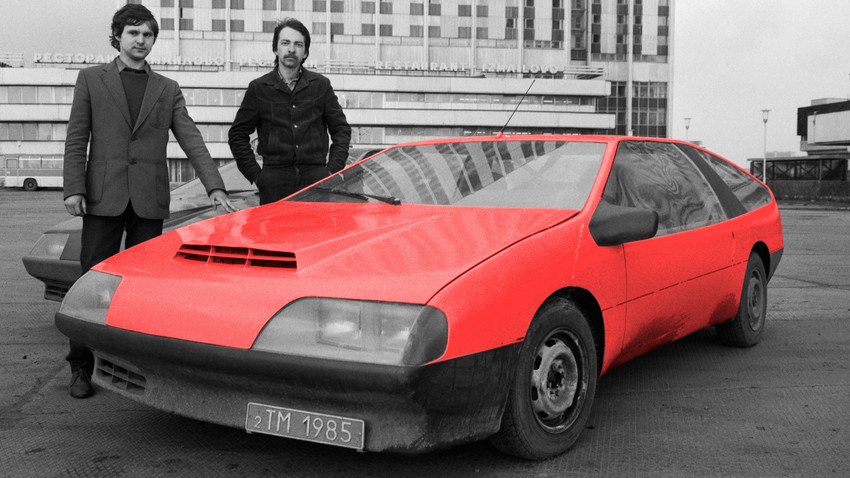This Soviet designer made supercars in the USSR a reality - from his garage

Engineering was such a popular pastime in the Soviet Union that occasionally self-taught engineering and design enthusiasts gathered for festivals to exhibit the results of their DIY garage work. These events were popular among the youth.
One of such festivals took place in Leningrad (now St. Petersburg) in 1981. Two young students who were in attendance were so inspired by what they had seen that they set out to create their own futuristic automobile from scratch… in a garage.
Gennady Hainov and Dmitri Parfenov took over an abandoned garage and began building a chassis for their new car, reportedly using old water pipes. They planned to produce two cars in total.
To bypass the shortage of spare parts in the USSR, the engineers used what was readily available on the market: they powered the cars with VAZ-2105 engines, utilized ZAZ gear systems, and NIVA wheels. They molded the car’s body from polyfoam and fiberglass. Ironically, neither had an engineering or industrial design degree.
Four years later, in 1985, Hainov and Parfenov had finished their two cars - both were virtually the same, with only minor differences in design and color: dark green and light beige.
A dashboard covered with buttons and switches was something unseen before in the Soviet Union. The cars only had engineering calculators (for calculating fuel consumption level and other easy parameters) built into the dashboards, but it was a minor aesthetic revolution in the Soviet car making that had never applied such futuristic looks in its vehicles.
The ”aggressive” exterior added to the shock. The car looked sporty and daring, unlike any other Soviet-produced automobile.
The amateur engineers showcased their invention at the EXPO-85 in Bulgaria. Hainov claimed the car could reach a maximum speed of up to 170 km/h on a straight road.
The legend goes that renowned Italian automobile designer Nuccio Bertone saw the car at an automobile festival in Prague and was shocked when he saw what the two young amateur carmakers were able to produce in an abandoned garage with no support from the government or investors.
The two men received TV coverage which inevitably also reached the Communist Party of the USSR. General Secretary Mikhail Gorbachev invited them to join a project to create a brand new car for the year 2000.
But Hainov and Parfenov only needed one year to produce the futuristic-looking minivan ‘Okhta’. Despite its eye catching design, reportedly successful ergonomics, and affordable production, the project did not make it to the year 2000. But then, neither did the USSR.
When the Soviet Union collapsed in 1991, Hainov and Parfenov parted ways, each with his own small construction bureau. Hainov’s Dragon Motor Company produced several unusual SUV models (some of which resemble a modern-day Range Rover).
He also designed this futuristic-looking SUV ‘Uran’.
Despite his ingenuity, Hainov never introduced his inventions on a large scale to revolutionize the car-making industry in Russia. Every car made by his bureau was assembled and sold on a very limited scale, from only a few cars to around 20 at most.
“There was a demand and there were some pre-paid orders,” said Hainov in one of his interviews. “The reason [for a halt] was our mentality and corruption.”
Although he believed that one person or even a small team of engineers could never make a car better than a giant car-maker like Volkswagen, Hainov kept releasing new limited models in small numbers.
His undertaking sank soon, however. “There were too many people who wanted to make money on these cars and there were too few people who wanted to do their job responsibly. When we started making money, tens of different people started coming to you, because they believed that you had to share the profit with them. So, the project collapsed economically,” said Hainov.
Sadly, Gennady Hainov passed away in St. Petersburg in September 2019 at the age of just 59.
Click here to read about the Russian youth who turn the Lada into a cult.
If using any of Russia Beyond's content, partly or in full, always provide an active hyperlink to the original material.
Subscribe
to our newsletter!
Get the week's best stories straight to your inbox